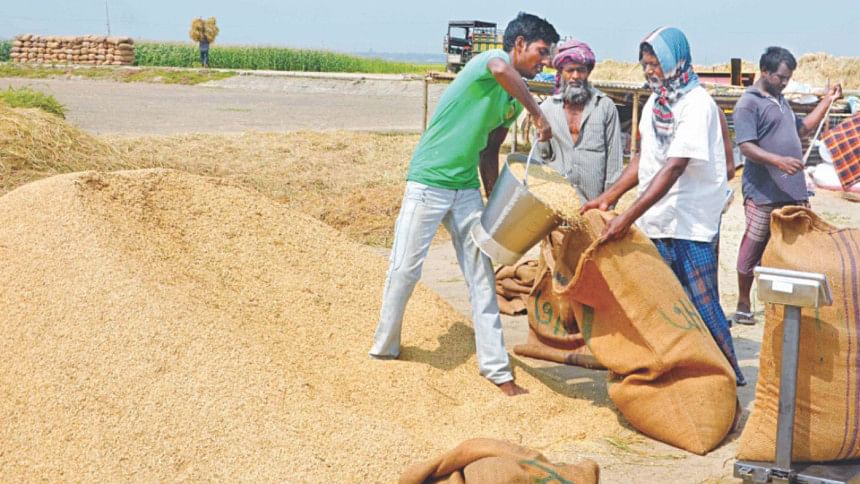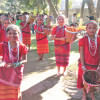Harvest fest at Chalan Beel

One evening, not too many evenings ago, when Sammer Ali from Rajshahi's Charghat set off by a buffalo cart, it was almost empty but hopes were high. Some 50 kilometres ahead are the vast paddy fields of the Chalan Beel wetland. With the Boro paddy harvest underway, Sammer is sure to find work.
“I'll spend three weeks in the fields,” says Sammer, an agricultural labourer. “When I'm done, I'll return home with the paddy I earned.”
Sammer is not alone in expecting to be paid in paddy. Many of the hundreds of prospective labourers attracted to the Chalan Beel area during the current Boro harvest, and also in November when Aman paddy is harvested, expect the same. Indeed they prefer it.
“The paddy I earn will feed my family for half a year,” Sammer says. “I'll also sell some.”
The local cash rate for a farm labourer is around Tk 300 per day. Labourers paid in paddy can earn an effective daily rate of up to Tk 1,000.

Harvest has some urgency in the wetlands. With the arrival of monsoon, many parts of Chalan Beel, currently awash with green sheaves, will go under five feet of water. At the same time, the paddy harvest in other districts is still a month away.
“The paddy grown in these areas is harvested earlier to avoid storm and flood damage,” says SM Mustafizur Rahman, additional director at the Department of Agricultural Extension in Rajshahi.
“At this time of the year, labourers in districts like Kushtia, Jessore, Lalmonirhat and Nilphamari don't have much work to do,” Prof Elias Hossain from Rajshahi University's economics department explains. “That's why they take their chances in the beel areas.”
In recognition of the paddy payment system, the professor calls the biannual migration the economics of non-employment. Yet to the many labourers and their families who rely on it, it's a system of vital importance.
One of them is Akbar Ali, who has arrived as part of a group of 25 from Sirajganj's Shahjadpur. They've set up a makeshift camp of bamboo and corrugated iron sheeting on the roadside.

“We will stay here for the harvest's duration and organise our own food,” Akbar says. They get five kilograms of paddy for every 40 kg harvested. After working for about a month, each of them will amass at least 1.2 tonnes of paddy before returning home.
Sammer meanwhile has found even more favourable circumstances. The land owner he is working for has agreed to provide both him and his buffaloes with food and shelter in addition to his share of paddy.

“It's easier for us to pay labourers with paddy,” says one farmer, Aftab Hossain, from Achrakhali village in Natore's part of the beel area. “We save on rice processing costs and the cost of taking that paddy to market. We also don't need to have cash at hand.”
The Department of Agricultural Extension estimates a Boro harvest of four tonnes per hectare in the beel areas this season. Across the Rajshahi region, around 3.71 lakh hectares has been sown with Boro paddy this year.

 For all latest news, follow The Daily Star's Google News channel.
For all latest news, follow The Daily Star's Google News channel. 







Comments